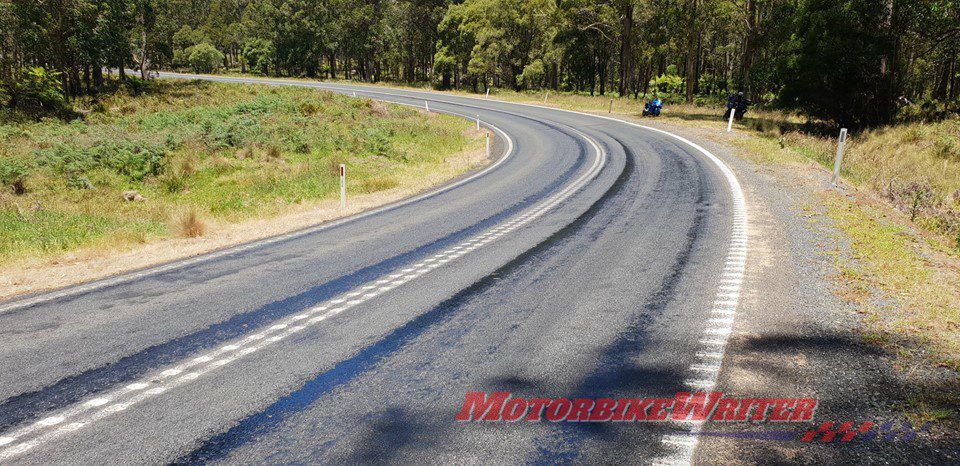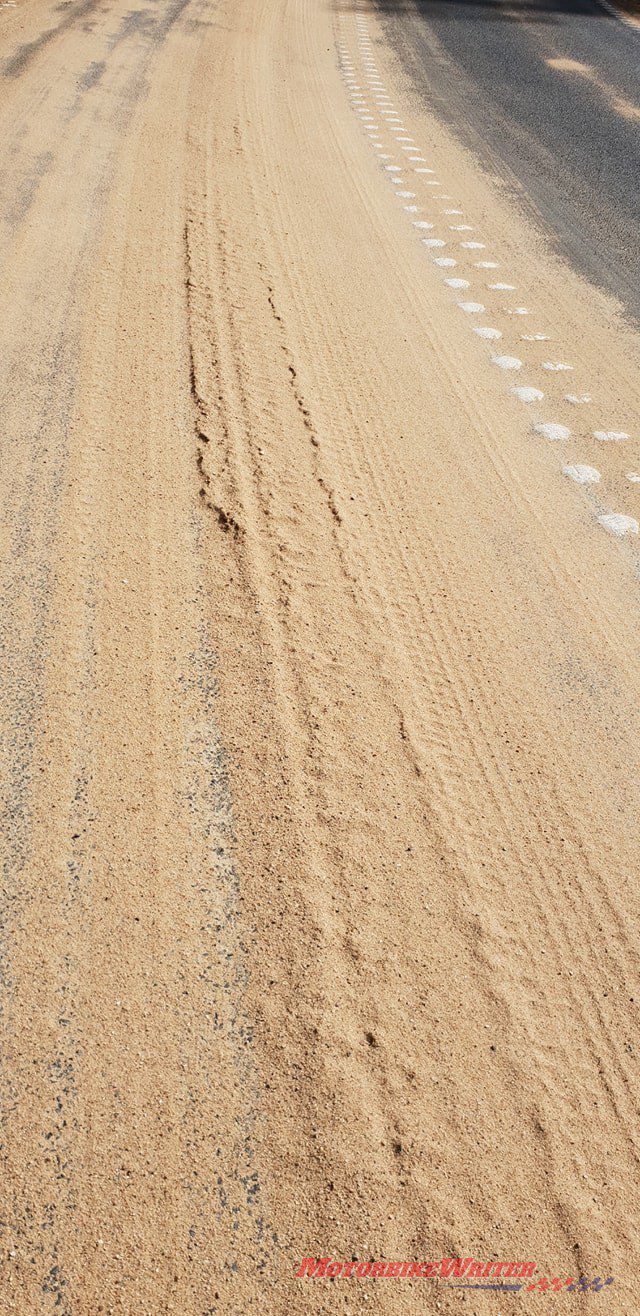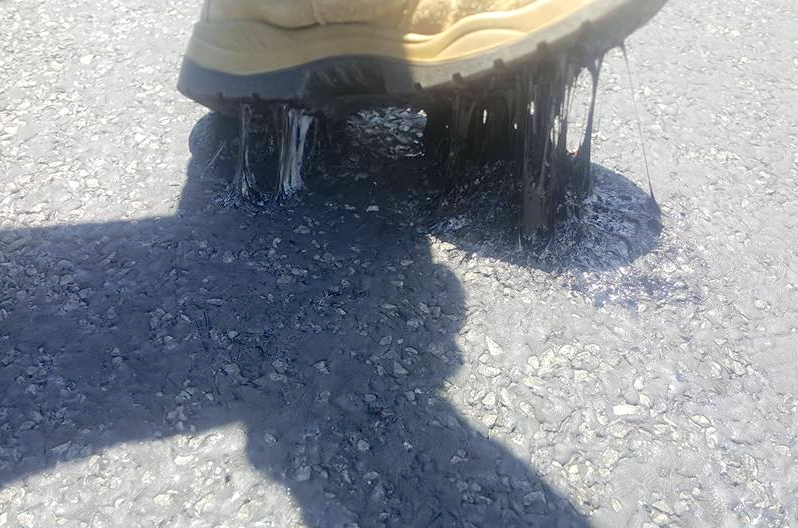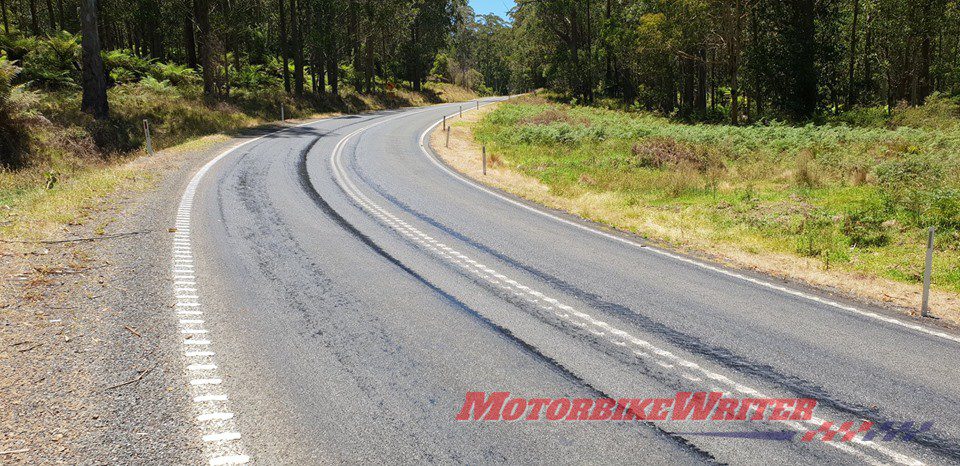Water is being sprayed over the Oxley Highway to blast away excess bitumen and cool the road down after it began melting in the current heatwave conditions.
The road began melting in December in 31C heat and is now melting even more as temperature soar higher.
Save the Oxley campaigner Ken Healey says the lines of molten tar are “right on the line your bike is going to take”.
In a short-term fix, the Roads and Maritime Services poured sand on the slippery melting tar last week. This prompted outrage from riders.
Motorcycle Council of NSW chairman Steve Pearce said it was “very disappointing to see this work without any consideration for motorcyclists”.
“You could easily come to the conclusion that Melinda Pavey doesn’t want motorcyclists to use this road, remember it was just a year ago when the speed limit was dropped,” he says.
Water to cool road
Then the RMS says Walcha Council will spray the melting road surface with water between Toms Creek and 85km west of Wauchope “due to extreme heatwave conditions”.
“Roads and Maritime Services acknowledge water is a scarce resource at this time, however it is required to ensure the safety of motorists and keep the road open,” a spokesperson says.
“Council will be monitoring the road and will use the water cart as required to cool the bitumen for the safety of all road users.
“Roads and Maritime is working with Walcha Council to identify and carry out further work in the coming weeks, taking into account appropriate weather conditions required for this treatment.
“Road users are reminded to take care and drive to conditions on all roads in northern and western NSW following extreme weather events.”
Now the RMS is water blasting the road surface to remove the excess bitumen.
Work will be carried out between 7.30pm and 6am on January 21/22, weather permitting.
This work is being carried out on a one kilometre section of the road about 60 kilometres east of Walcha to remove excess bitumen from the pavement and help maintain a safe road surface during extremely hot weather.
Speeds in affected areas will be reduced to 60km/h with variable message signs indicating the speed change and the affected road surface.
After the images were posted, RMS spread thick sand over the road in what independent road surface expert and rider Ian Kite says is a short-term fix only.
Melting tar cause
Ian Kite, a 40-year local government infrastructure manager and lecturer in road construction, pavement design and bitumen sealing says the technical term for melting tar is “bleeding”.
“The cause of the problem is the aggregate in the seal being completely submerged by the bitumen and allowing the tyres to make contact with the bitumen,” he says.
“This can be caused by a number of factors – usually a combination of several.”
How to fix the issue
Ian says sand is the “quickest/simplest/cheapest solution” in the short term to absorb the excess bitumen.
Sometimes fine aggregate or crusher dust is also applied.
“The bitumen adheres to the surface of the particles and is no longer free to stick to tyres or present a slick surface,” he says.
He says the photos of the road indicate a high application rate of sand resulting in a loose, unbound surface “not much better than the slick road”.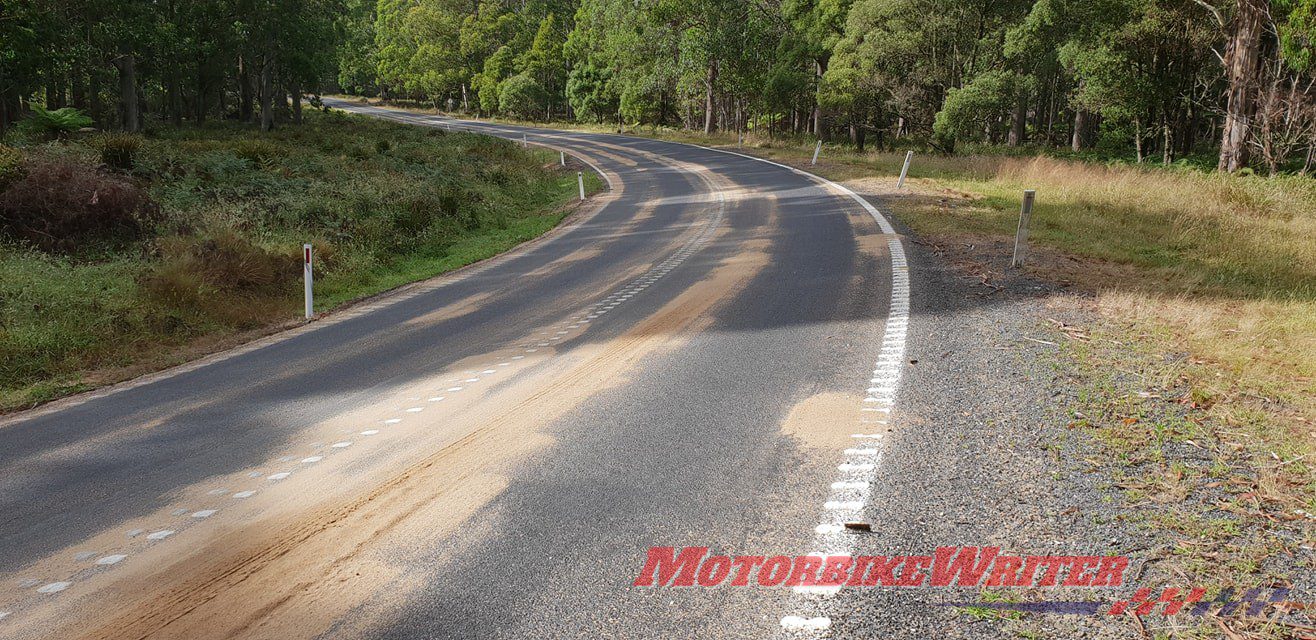

“It’s pretty hard/near impossible to get the application rate just right since the bleeding of the surface is not uniform,” he says.
“Therefore it is usual to over-apply the sand or dust, but sweep off the excess ASAP.
“Until the sweeping is done, appropriate ‘slippery surface’ signage should be in place.
“I would expect the sweeping to be carried out within 24 hours. It may be necessary to re-apply the sand on subsequent hot days followed by sweeping.”
Other long-term solutions require analysis, design and specialist equipment to implement, Ian says.
Treatments include application of a “fog” coat of bitumen, rolling in another layer of aggregate, removal of excess bitumen by water blasting and replacement of the entire seal.
Ian says the analysis, design and resourcing of these treatments may take a couple of months to a year to organise and finance.
Mt Glorious melts
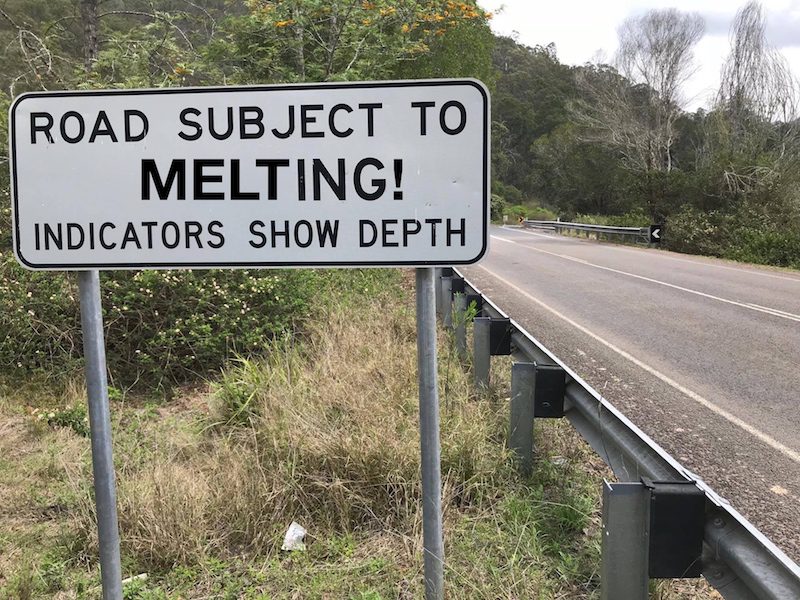


Similar melting tar on the Mt Glorious Rd west of Brisbane in 2017 resulted in at least one rider crashing.
Queensland Main Roads spent months working on the road to fix the issue with various methods.
More information about road conditions across Queensland are available on TMR’s website or by phoning 13 19 40.


